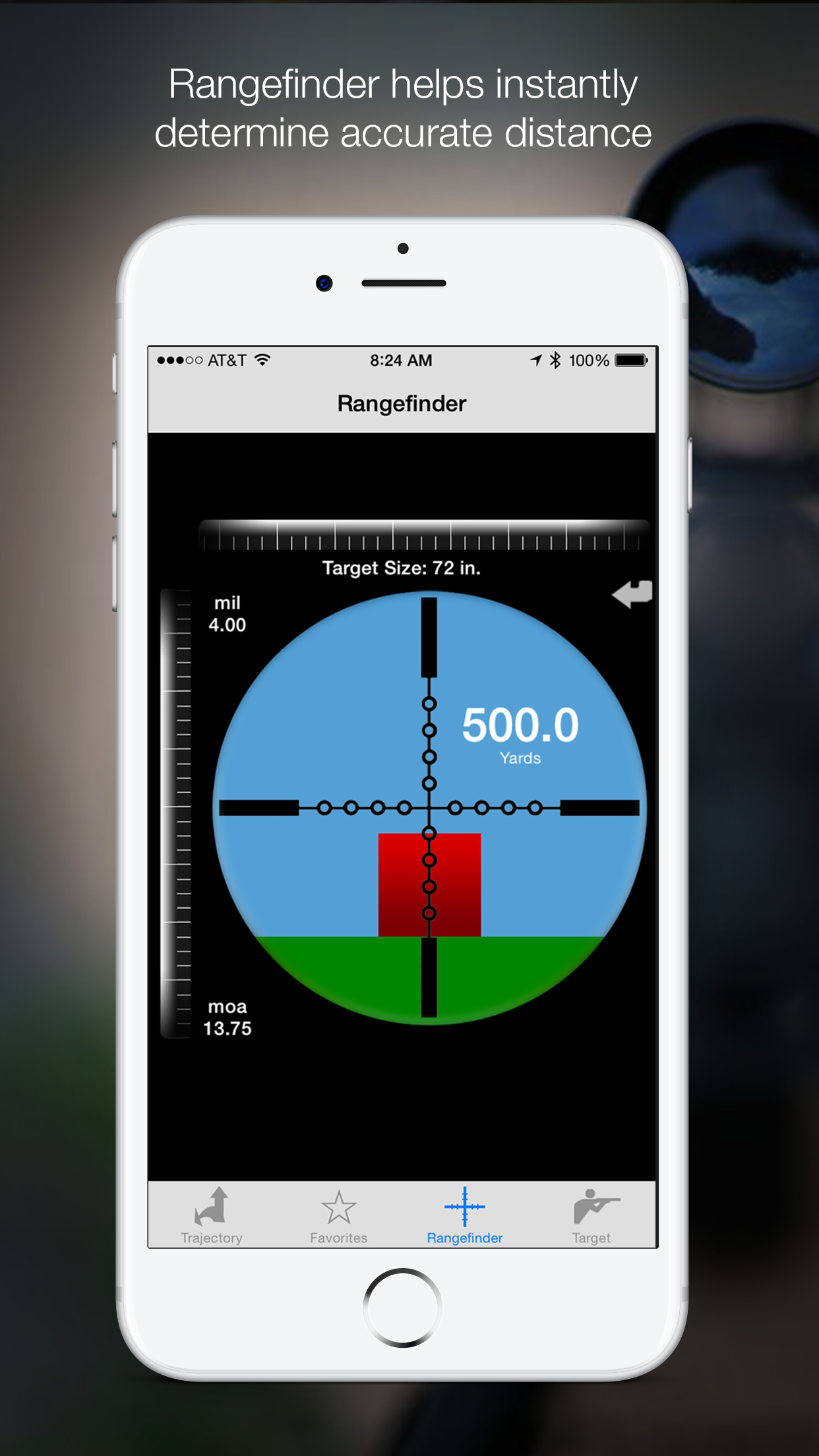
From Ballistic

Long-range hunting continues to gain in popularity, which is not a huge surprise given the superior tools available to hunters today. There are more sub-MOA rifles today than ever, more high-quality glass, and more brands of ammunition designed specifically for long-range hunting.
But all these fine hunting tools are useless if we don’t now exactly where our shots are going. That’s where Ballistic comes in. It’s a kind of a Lord of the Rings thing: one Ballistic to bring all the tools together, and in the distance combine them!
Okay, not exactly. But, why acquire such first-rate shooting gear without the premier app to direct your long-distance shots? Put another way, if you are as serious about long-range hunting as we are, you need the Ballistic advantage.
If you are new to longer-range hunting, start with the basics.
First, create a Bullet Profile on Ballistic for your hunting round or rounds. Fill in all the inputs you can, including the manufacturer’s ballistic coefficient, bullet weight, etc., as well as the atmospheric conditions at your shooting range.
Using your hunting rifle-optic set up, plus your hunting ammunition, zero your rifle at 100 yards, generating as tight a three- to five-shot group as possible. Next, use a high-quality chronograph to determine your muzzle velocity; ten shots through the chronograph will provide the ammunition’s average velocity. Add this muzzle velocity to your Ballistic inputs and your 100-yard zero.
Many hunters neglect the “Sight Height” input on the Ballistic profile, thinking it doesn’t make that much of a difference. Wrong!
Sight height is the distance from the centerline of the scope to the centerline of the bore. Some hunters just “eye it up” to estimate the distance. In fact, you should use a set of calipers to measure this distance. Measure to .01 inch, do this several times and average your results.
Ballistic calculations show that various sight heights for the same loads don’t have a huge effect—up close. But stretch out your shooting distances, and just a half-inch of sight height variation can mean several inches up or down. Enough to cost you a miss on that game animal or–much worse–a wounding shot.
Many longer-distance hunters prefer a 200-yard zero, as it considerably reduces the hold-over distances they’ll need for longer shots. But, review your Ballistic profile and you’ll discover that rounds also require a hold under at much closer distances. You may be ready for that long-range shot, but your trophy game animal could very well come strolling by at 40 yards!
Know your reticle, too. There are significant differences between MOA and MIL-RAD hold-over and windage points. Ballistic will calculate these points for both MOA and MIL’s.
Atmospheric conditions have a huge influence on bullet drag, and Ballistic is an easy and precise method for factoring in those conditions.
Bullet drag is created by how much air resistance a bullet encounters during flight. Sometimes referred to as “aerodynamic drag,” bullet drag increases as the density of the air increases. For the long-range hunter, more drag means your bullet will slow at a faster pace versus less drag, with a slower bullet more susceptible to gravity and wind.
Air density is influenced by many factors, including altitude, barometric pressure, temperature and relative humidity. At higher altitudes, for example, air tends to be thinner, providing less resistance, while air generally becomes heavier (and therefore more resistant) as the altitude is closer to sea level.
If you, for example, zero your rifle near sea level and then go hunting for mule deer in mountainous terrain, the difference in altitude alone can change your point of impact by several inches.
As environmental conditions change during your hunt, simply adjust your inputs and Ballistic will instantly re-calculate your long-range shooting solutions.
And then there’s the all-important wind. As the shooting distances increase, wind has a major influence on where you bullet will or will not land.
With Ballistic, you can input wind speed and direction in a manner of ways. Ballistic’s Advanced Wind Kit takes full advantage of the JBM ballistics engine’s wind capabilities to allow long-distance hunters to account for nearly any possible wind scenario.
For example, you have a 10 MPH wind at your shooting position blowing from left to right. But where that trophy elk is standing–480 yards away–the grass is clearly being moved from right to left at what you estimate is approximately 5MPH.
Using the Advanced Wind Kit, you can easily and quickly program in this wind scenario. Simply taps the screen to create a new wind zone and then slide it to the appropriate range: 10MPH at 0 yards, left to right; and 5MPH at 480 yards, right to left.
Ballistic will automatically plot the precise windage points you need to adjust for these conflicting winds! And Ballistic can do this for up to eight different wind sources, including headwinds and updrafts.
If long-range hunting is in your future, increase your odds for a successful hunt with Ballistic, the Number One app for serious shooters.



